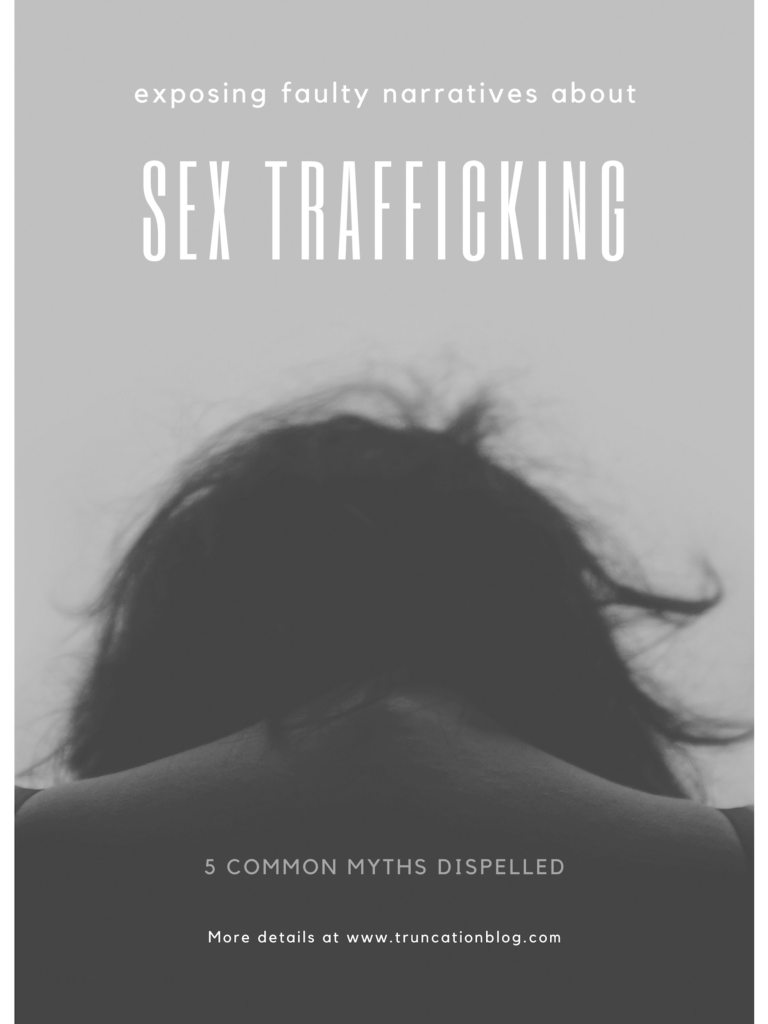Guest Post: Exposing Faulty Narratives About Sex Trafficking
Hi friends. Today we’re going to do something a little bit different.

If you’ll remember, while I was participating in Dressember, I mentioned a couple of times that I was trying to get a guest post here that would shed some light on some of the misconceptions that people have about sex trafficking.
A few months ago, we had a series on sex trafficking at my church, and the very knowledgeable Amanda was willing to share her time and expertise giving our church some education on how we can be more aware of sex trafficking in our own environment.
It was so helpful, and I knew I wanted to share it with you guys.
In recent months I’ve seen a lot of social media posts/stories that are over generalized and prey on misconceptions/fear surrounding sex trafficking.
I even saw somone post that they were legitimately afraid to let their wife and kids go to the grocery store alone for fear of them being trafficked.
I’m all for being aware of our surroundings and using our intuition to recognize danger, but I also think it’s harmful to believe faulty narratives without becoming informed on what the actual issue is.
So to assist you in that pursuit, I am very pleased to say that Amanda was willing to take the time to do a guest post for me.
Enough chatting from me, let’s get into Amanda’s post:
January is Trafficking awareness month
Across our nation, people are seeing and discussing articles and posts about Human Trafficking. A quick Google search brings a seemingly endless number of statistics and commonly held beliefs across the internet. If you’re anything like me, you read articles and look at stats and organizations and wonder who to believe – especially with sometimes conflicting information. How do you decipher fact from myth? Is Human Trafficking really happening here in my city?
When faced with the term “trafficking”, our brain can go in a multitude of directions based on things we’ve heard, read, or experienced. We might think of labor trafficking, organ trafficking or sex trafficking. In this post, we will focus on sex trafficking.
When we hear “Sex Trafficking”, our mind often conjures one of two common narratives prevalent because of our media-saturated culture. The first is abduction as featured in the popular film Taken. The second narrative is the romanticized story of prostitution portrayed with Julia Roberts’ character in the movie, Pretty Woman. The reality is that trafficking is often misidentified or not even noticed if these fictional stories shape our view of what Sex Trafficking looks like.
What is Sex Trafficking?
Sex Trafficking involves the use of force, fraud or coercion to obtain some sort of sexual act from a victim. If the victim is a minor, these actions do not need to be present for sex trafficking charges to apply. Trafficking in minors is a whole nother post, with separate laws that apply. Sex Trafficking involves a victim, buyer, and trafficker. All Sex Trafficking falls within the category of Sexual Exploitation, where anything of value is given in exchange for a sexual act, and can include, but does not require the use of force, fraud or coercion, and does not require a third party involvement. Sexual exploitation can include child sex abuse, pornography, strip clubs, prostitution, the sex industry, as well as sex trafficking.
There are common myths about sex trafficking that float around the internet. Let’s examine 5 of them and dispel these common misconceptions.
Myth 1. It happens overseas but not in America.
Sex trafficking happens everywhere. Nowhere is exempt. It happens in the inner city, suburban areas, rural towns, and big towns. It even happens to people attending schools and churches. I’ve heard law enforcement say, “If you have internet availability, you have access to sex trafficking.” Basically, any area where teens hang out or people gather can be a spot where traffickers look for victims to recruit.
Myth 2. Trafficking includes abduction 100% of the time.
This is one of the biggest myths out there. As a survivor of trafficking myself, I can tell you that often there is no abduction involved. It is true that there are cases where children, teens or even adults are abducted but these are not the most common occurrence. The reality is that most traffickers take time to “groom” their victim. The grooming process looks different in every situation, but basically is the process a trafficker uses to build trust with the victim and then isolates him or her from those around them. A trafficker typically targets someone who is highly vulnerable in some way, and exploits that vulnerability – hence, potential victims don’t even recognize the process of being groomed.
On social media, we see stories of kids being taken from local stores, or of parents freaked out that someone is following their child. While stranger abductions do happen from time to time, they are not the norm. It is good to be vigilant about who is around your child physically; however, far more frequently, kids are approached by strangers via the smart that the parent has gifted them with. Kids’ phones have social media and games that allow predators to access children through chat rooms and apps, often without the parent being aware of the contact. Parents can pay attention while out in public spaces with their child, but perhaps more importantly, they should also have conversations with their kids about accountability and responsibility with online contacts.
Myth 3. Trafficking must involve chains and cages
While true that victims of sex trafficking are sometimes physically kept in bondage or imprisoned, most often, physical chains are not present. Pimps/Traffickers use coercion and manipulation to form invisible bonds. For example, they exploit a vulnerability or need that the victim has; maybe the teen desires love, is in need of safe shelter, or experiences food insecurity because of family circumstances. The exploiter often takes time to build trust with the victim by meeting one or more of these needs, and convincing the victim that he or she is physically, psychologically and emotionally being cared for or even “loved” by the perpetrator. There is a concerted effort to create dependence, followed by isolating the victim slowly from any supportive relationships. Eventually, the victim feels alone and without options, as well as feeling indebted to this person who has taken time to get to know them and provide for their needs. These psychological and emotional bonds, much like Stockholm Syndrome, can be far stronger than physical chains could ever be.
Myth 4. Victims of trafficking are female and pimps are always male.
A victim can be a man, woman, boy or girl. And while a pimp is stereotypically a male, there are women pimps as well. Women pimps are more common overseas and are usually called madams. Here in the U.S. it is more common to see a male pimp have a woman who helps him as a “business partner” – commonly referred to by the term “Bottom Bitch”. This female may also be prostituted, but has responsibilities to manage the other women or children in the group.
Myth 5. Victims will ask for help if they want to get out.
Trafficking victims rarely ask for help, because they are under intense control by their pimp/exploiter, and have been convinced to believe lies that they are not valuable and that no one but their pimp could ever love or care for them because of who they are and what they’ve done. Traffickers build dependence and concoct false narratives for the victims to believe. For example, women are convinced that the police are out to get them, the church is against them and will never accept them, and that outreach workers don’t really understand their situation. The psychological control pimps hold over trafficking victims is so strong, that even when trying to escape a life of being prostituted, it takes an average of seven times leaving and returning to the life before a final break can be made. Victims often feel worthless and without options, and also live in a constant state of fear of reprisals for even the smallest misstep.
More information
Here are three of my favorite sites to find reliable information on sex trafficking in the U.S.:
- Exoduscry.com
- NCMEC- www.missingkids.com/home
- National trafficking hotline: https://humantraffickinghotline.org/mission
- www.sourcemn.org
If you are worried you or someone in your life is being trafficked please call 1-888-373-7888
Amanda Casey is the outreach coordinator and advocate at Source. She leads teams that do street outreach and online outreach to women who are in the life. Amanda uses her experiences as a professional and as a survivor to advocate for a world where trafficking no longer exists and people are valued. She is a public speaker and has written a short book on how to talk to kids about trafficking. She lives in Minnesota with her family.






